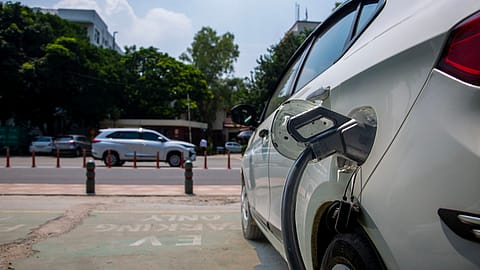India needs ₹16,000 cr to meet public charging demand for EVs by 2030
Financial viability for public charging stations in India remains low at less than 2% utilisation rates

India needs ₹16,000 crore in capex to meet growing public charging demand and achieve the government’s mission of over 30% electrification by 2030, according to a report by the Federation of Indian Chambers of Commerce & Industry (FICCI).
The ‘FICCI EV Public Charging Infrastructure Roadmap 2030’ report suggests that the top 40 cities out of the 700-plus cities analysed on the basis of their EV sales from 2015 to 2023-24 and 20 highway stretches could be prioritised for scaling up public charging infrastructure. These top 40 cities are expected to have higher EV penetration in the next 3-5 years given the current EV adoption rate, and favourable state policies. And 20 highways stretch connecting these 40 priority cities contribute to 50% of the vehicular traffic.
Financial viability for public charging stations in India remains low at less than 2% utilisation rates and to achieve profitability and scalability, they need to aim for 8-10% utilisation by 2030, according to the report. Citing a case study, the report highlighted that Germany has created an economically viable public charging network with 5-10% utilisation rates, and more than 16% utilisation rates at the highways. FICCI says this may require players to collaborate with local authorities for hyper-granular planning to identify hot spots for setting up public charging stations.
Charge point operators need at least 15-30% utilisation to be viable, Deepak Jain, partner, Bain & Company, told Fortune India last year. The Indian government has yet to mandate a common fast charging standard for four-wheelers and two-wheelers. Some automakers still produce vehicles that are compatible with only low-voltage fast charging Bharat DC-001 standard, which is based on the Chinese GB/T standard.
FICCI report also highlights key challenges that need to be addressed to scale up charging infrastructure, ranging from financial constraints like high infrastructure costs and low utilisation rates to operational constraints such as lack of uninterrupted power supply and lack of standardised protocols to enable interoperability.
For instance, the current cost structure of electricity tariffs with fixed charges regardless of energy consumption combined with low utilisation at public charging stations is making it challenging to achieve break even.
States like UP, Delhi and Gujarat have no or low fixed tariffs but there are other states where fixed tariffs are high, thereby challenging the viability, the report states.
Recommended Stories
The report calls for actions across key stakeholders including policy makers, industry players and government bodies to enable India’s transition towards clean energy and sustainability. The report also emphasised that Ministry of Power’s recent guidelines should be followed across states to have a uniform charging framework. The report also urged the states to set up state level cells with representatives from industry stakeholders, state and central authorities to enable and monitor charging infrastructure roadmap implementation.